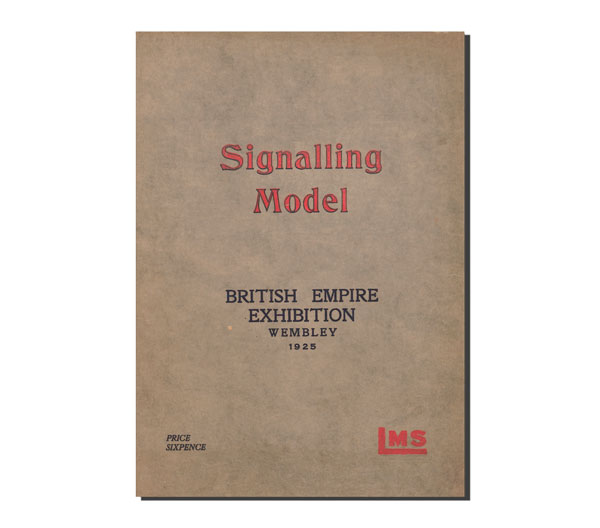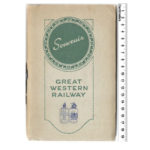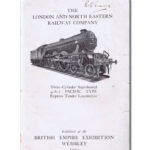Description
There are two large folding diagrams one Illustrating the principles of block signaling the other being a plan of the model railway which formed the centerpiece of the display. This said to have come from one of the LMS Signaling Schools. Which, is not stated, but a glimpse of rolling stock in one of the photos seems to show LNWR livery. This was not by any means a scale model but a fully signaled, point interlocked railway in miniature complete with block instruments and bells.
There are tipped in photos of block instruments and photos of the model and signal school interiors.
The British Empire Exhibition was held at Wembley on the site of the present National Stadium.
Originally intended to run from May to October 1924 it proved so successful that it re-opened for summer 1925. Consequently not all exhibits were on view in both years. Several railway companies and private loco builders had display stands at the Exhibition; in some cases they exhibited their latest locomotive, like LNER no. 4472 Flying Scotsman; this was joined in 1925 by GWR 4079 Pendennis Castle. Several other railway locomotives were exhibited: in 1925, the Southern Railway exhibited no. 866 of their N class, which was brand new, not entering service until 28 November 1925. The 1924 exhibition included a Prince of Wales class 4-6-0locomotive of LNWR design, dating from 1911, which had been built by the Scottish firm of Wm. Beardmore as a private exhibit. They had previously built similar locomotives for the LNWR, which in 1923 had become a constituent of the newly formed London, Midland andScottish Railway (LMS); when the exhibition closed in November 1924, the LMS bought the locomotive from Beardmore. Thanks to the LMS policy of appointing their CME on the basis of “Buggins’s Turn” locomotive policy was in disarray, and the “Prince” was the best large loco available, but it made a poor showing compared to the compact glittering “Castle” and the gleaming large “Scotsman”. All the participating railways had supporting displays. In 1925, the LMS had two. “Control” (also available from us) and “Signaling Model” described here.
PREVIEW BELOW – MAY TAKE A WHILE TO LOAD.




Reviews
There are no reviews yet.